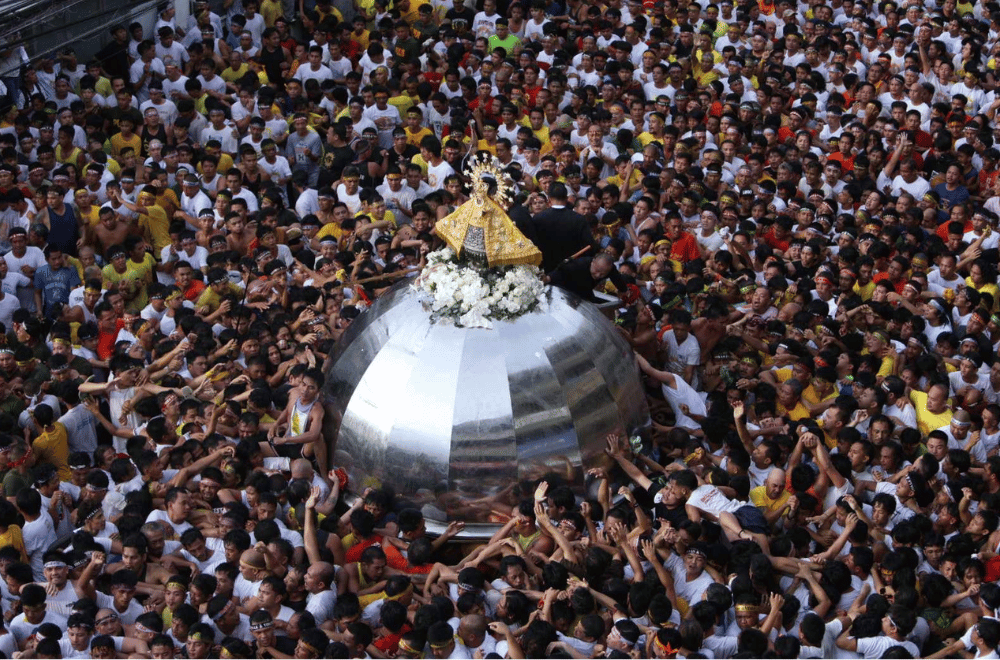Over 900,000 devotees gathered in Naga City on September 13, 2024 for the Traslacion of the Divino Rostro and Our Lady of Peñafrancia.
As of 5 p.m. on September 13, the Multi-Agency Coordination Group (MACG) reported that over 900,000 devotees gathered for the Traslacion, which began at the Old Peñafrancia Shrine and made its way to the Naga Metropolitan Cathedral.
Despite intermittent rains, the celebration continued with pilgrims chanting, "Viva La Virgen! Viva El Divino Rostro!"
The Peñafrancia Festival, the largest Marian celebration in Asia, honors Our Lady of Peñafrancia, affectionately called "Ina," the Patroness of Bicolandia.
This year holds a special milestone as it marks the 100th anniversary of the Canonical Coronation of Ina.
The Centenary of the Canonical Coronation is a recognition of her importance in the Catholic Church and Bicolano faith, making this year’s celebration especially meaningful.
In addition to the massive turnout on the ground, the event drew 12,858 online viewers via Facebook Livestream.
Religious groups, civic organizations, and over 1,000 Sacristans from Camarines Sur participated in the Grand Ceriales.
The images of Ina and Divino Rostro will once again take center stage during the second Traslacion and Peñafrancia Fluvial Procession, set for September 21, 2024.
The images will be transferred from the Naga Metropolitan Cathedral to the Reina Del Bicol Landing, followed by a grand fluvial procession along the Naga River, where thousands of devotees are expected to witness the event.
As preparations continue, authorities remind the public to follow safety protocols, including a ban on personal drone use during processions.
HISTORY
According to the Archdiocese of Caceres, the devotion to Our Lady of Peñafrancia traces back to May 19, 1434 when Simón Vela found an image of the Blessed Mother on Peña de Francia in Spain.
It had been hidden to protect it from the Moors during their invasion. Miracles began to occur after the image’s discovery, and a chapel was built to house it.
In the 18th century, Miguel Robles de Covarrubias, a seminarian in Manila, experienced miraculous healing through the intercession of Our Lady of Peñafrancia.
After recovering, he became a parish priest in Naga City and commissioned a statue of the Virgin Mary, which is now housed in the church he built.
The devotion continued to grow as more miracles were attributed to her, eventually leading to the creation of the Peñafrancia Festival.




